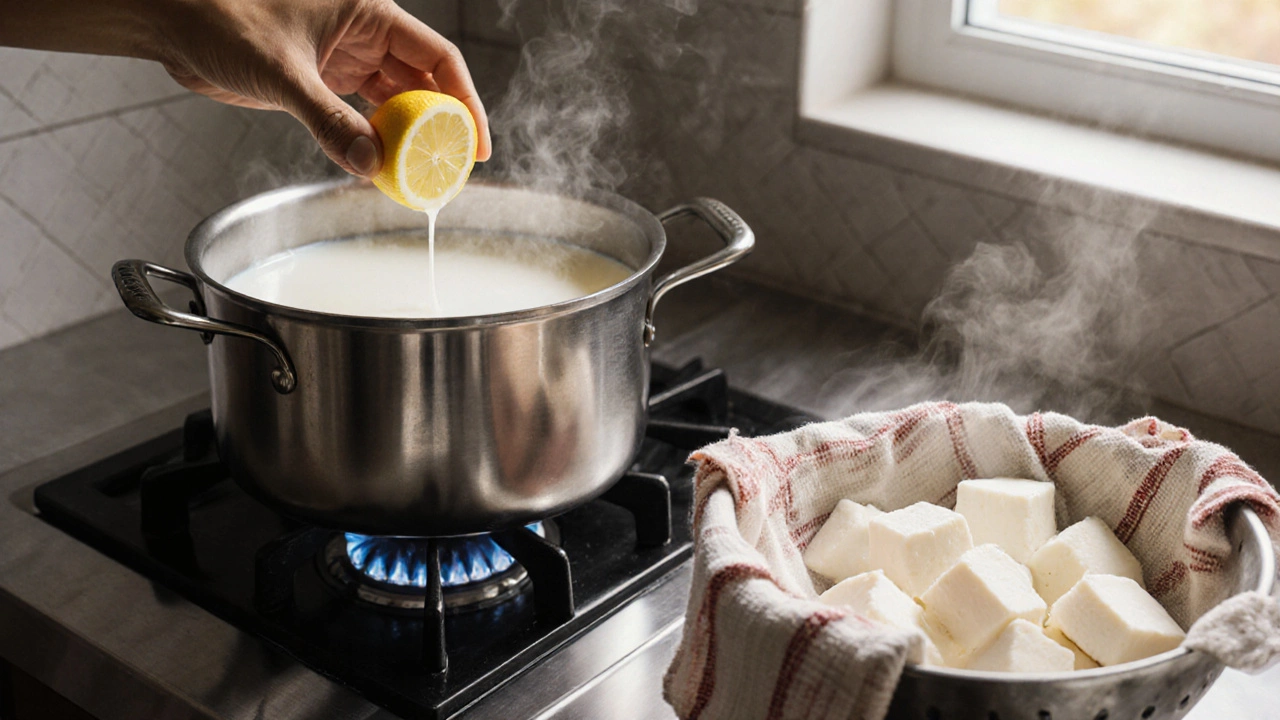Indian Cheese: From Paneer to Fresh Delights
If you’ve ever wondered what makes Indian cheese different from the cheeses in the West, you’re in the right place. Indian cheese, especially the beloved paneer, is simple, fresh, and packs a milky flavor that works in everything from curries to salads. The great thing is you don’t need fancy equipment – just milk, an acid like lemon juice, and a little patience.
First, let’s talk about how Indian cheese is made. Heat whole milk to a gentle boil, add the acid, and watch the curds separate from the whey. Scoop the curds into a cheesecloth, press gently, and you have soft, crumbly paneer ready to cook. This method keeps the cheese fresh, low‑fat, and free of preservatives, which is why it’s a staple in Indian homes.
Popular Indian Cheeses
Paneer is the star, but there are a few other types worth trying. Chhena is a finer version of paneer, often used in sweets like rasgulla. Khoya isn’t a cheese exactly; it’s reduced milk solids that give a rich texture to many desserts. Paneer tikka is simply marinated paneer grilled for a smoky bite. Each variety has its own texture and melt‑point, so pick the one that fits your recipe.
What makes these cheeses special is they don’t melt like cheddar. Instead, they hold their shape, making them perfect for stir‑frying, grilling, or adding to gravies. If you’re looking for a meltier option, try Malai Paneer, which has a higher fat content and a creamier mouthfeel.
Cooking with Indian Cheese
Here are three quick ways to use Indian cheese right now. First, toss cubed paneer into a hot pan with a splash of oil, cumin seeds, and a pinch of salt – you get a simple snack that’s ready in minutes. Second, add paneer cubes to a tomato‑based curry; the cheese soaks up the sauce and stays firm, giving you a hearty bite. Third, blend crumbled paneer into a smoothie for extra protein without changing the flavor too much.
Storing Indian cheese is easy. Keep it in a shallow container with a little water in the fridge; change the water daily and it stays fresh for up to a week. If you’ve made a big batch, freeze the cubes in a zip‑top bag – they’ll keep for three months and thaw quickly in the microwave.
Health‑wise, paneer is a good source of protein and calcium. Because it’s made from whole milk, it also provides healthy fats, but you can swap in low‑fat milk if you’re watching calories. Pairing paneer with veggies like bell peppers or spinach balances the meal and adds fiber.
Ready to try a recipe? A classic Palak Paneer combines spinach puree with paneer cubes for a vibrant, nutritious dish. Or go sweet with Paneer Kheer, a rice pudding where soft paneer adds richness. Both are simple, flavorful, and showcase the versatility of Indian cheese.
So next time you see “paneer” on a menu, you’ll know exactly what it is and how to use it at home. Grab some fresh milk, a splash of lemon, and start making your own Indian cheese today – the kitchen adventure is just a few steps away.
What’s the English Equivalent of Paneer? A Simple Guide
Discover the English name for paneer, compare it with cottage cheese, ricotta, and queso fresco, and learn how to substitute it in recipes.
Why Paneer Cheese is So Expensive: Secrets Behind the Price in Australia
Unpack why paneer cheese costs so much in Australia. Get inside info on supply, Australian dairy, import hassles, and tips to save money on every paneer buy.

